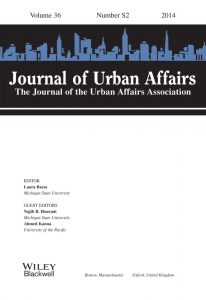On Youth: Rhetoric, Practices, and Punishment

Perhaps it is best to start with the social construction of youth with contemporary society. The perception of youth today holds – perhaps – the same way it did some time ago; with the catchphrase “today’s youth are so bad” continuing forward with every generation. This sense of nostalgia, the fondness toward the past has not been divorced from how the youth today are constructed. Making evening news headlines and front pages are perceptions of the “monster child” – the ever worsening condition of the younger population. On the one hand, as a risky population, youth have become something to be protected from. On the other hand, however, the youth also need to be protected – they are often defenseless, ignorant to larger societal ills, and require protection.
While youth behaviors may not have change all that much, it is clear that public opinion, institutions, and policies think otherwise. For example, Lind and Irwin’s Beyond Bad Girls demonstrate that while female aggression has remained relatively stable, the glorification of their “relational violence” in the media and popular cultural avenues have been enough to spark a near moral panic. The authors contend that due to the construction of highly policed gendered roles, females are unable to achieve any status – whether academic or social.
The construction of the deviant female is also prevalent in Nikki Jones’s Between Good and Ghetto. Her argument is that black females must choose between black or mainstream femininity. However, given their harsh social conditions, the conventional female role is blocked – thus, forcing them to choose a role between being “good” or being “ghetto.” Given the intersection of their economic, gender, and racial marginality, females must try to preserve femininity (to fit the mainstream feminine construction) without become a victim within their own community.
Scholars attempting to understand contemporary practices have taken note of large scale shifts that have influenced the juvenile justice system since its creation. Scholars including Beck, Simon, Garland, and Giddens, for instance, have begun taking note of such trends that are affecting practices and policies aimed at youth. Simon, for instance, argues that with the collapse of the new deal and decreased support for government, crime has become a perfect mechanism to gain backing from the population for legislation and crime control practice. In essence, as the title of his book states, Simon argues that the U.S. is currently governing its people through crime.
However, in efforts to increase formal mechanisms of control, the government has demonstrated its limits as a sovereign state (Garland, 1997). That is, although implementing longer sentences, tougher sanctions, zero-tolerance policies, and surveillance technology, crime has held a tight grip on public consciousness. According to Aaron Kupchik’s Homeroom Security, some of these practices have made their way into the school setting and juvenile justice system. No longer are drug sniffing dogs, security cameras, police officers, and zero-tolerance sanction limited to the adult court. However, instead of creating active civic participants, Kupchik notes that these practices may have the opposite consequence of producing over-controlled disciplined bodies which are being prepared for position in the labor force or incarceration.
As a final note, Feld’s Bad Kids, touches on how the construction of youth have influence the development of the contemporary juvenile court. As youth, it was thought that the adult court was too harsh, and that youth should receive more protection. However, given the current state, the juvenile courts have been interpreted as being too lenient. As a result, the juvenile system has purged many of its safeguards and has adopted the penal mentality of the adult system. Returning to the opening thought – it is the construction of youth that helps pave the way for specific practices and policies. All together, the social construction of youth, as being a threatening and vulnerable population has paved the way for a more invasive, penal oriented, juvenile justice system.
Read: “Beyond Fear: Sociological Perspectives on the Criminalization of School Discipline“, in The Sociological Forum.
Read: “Homeroom Security: School Discipline in an Age of Fear“. By Aaron Kupchik, published by NYU Press (2010).







1754-9469/asset/society_affiliation_image.gif?v=1&s=9197a1a6ba8c381665ecbf311eae8aca348fe8aa)